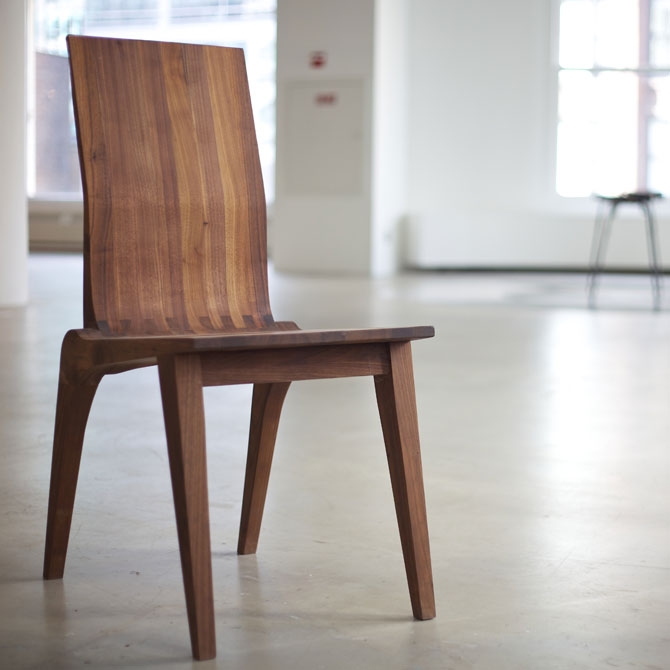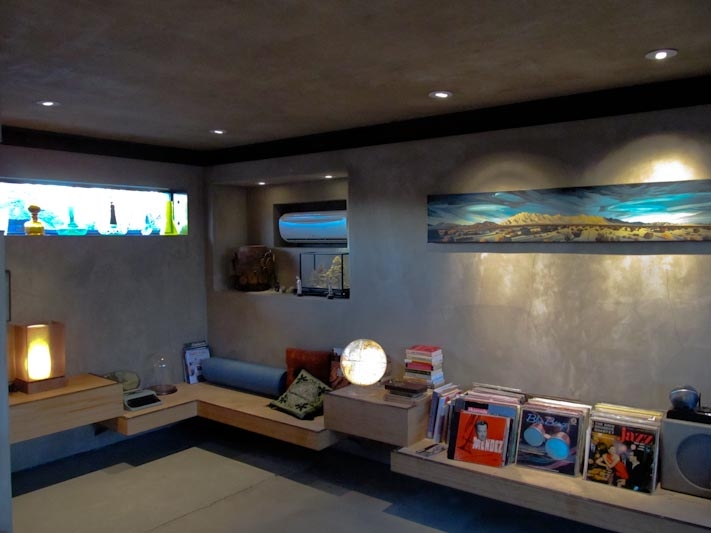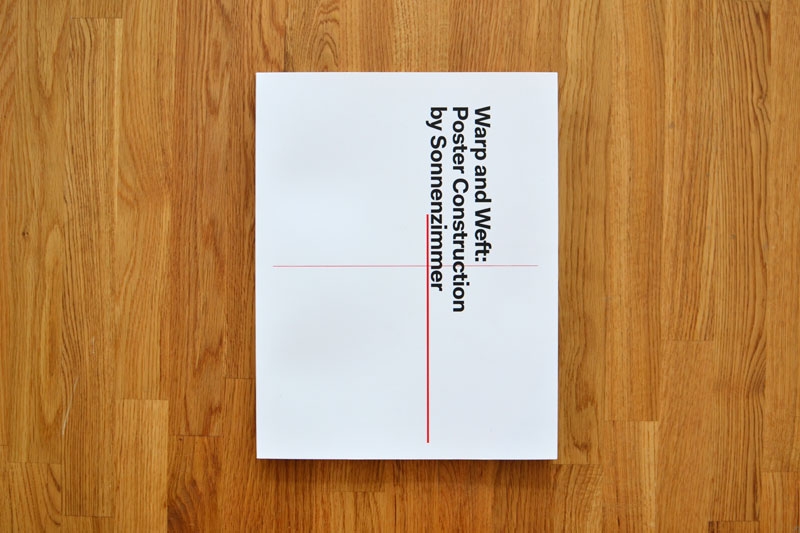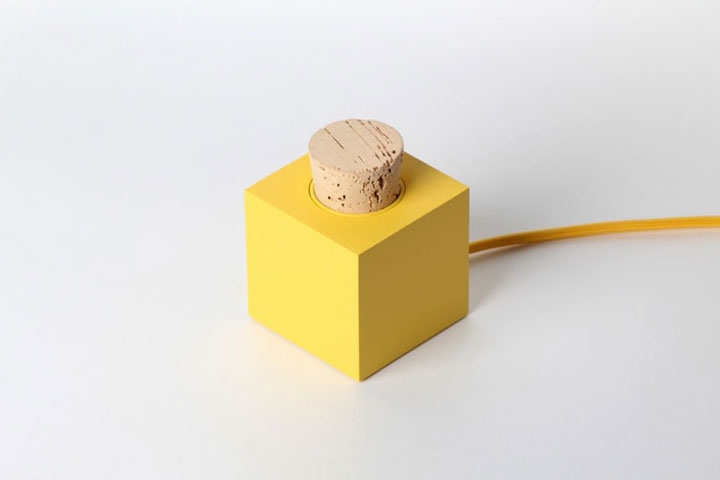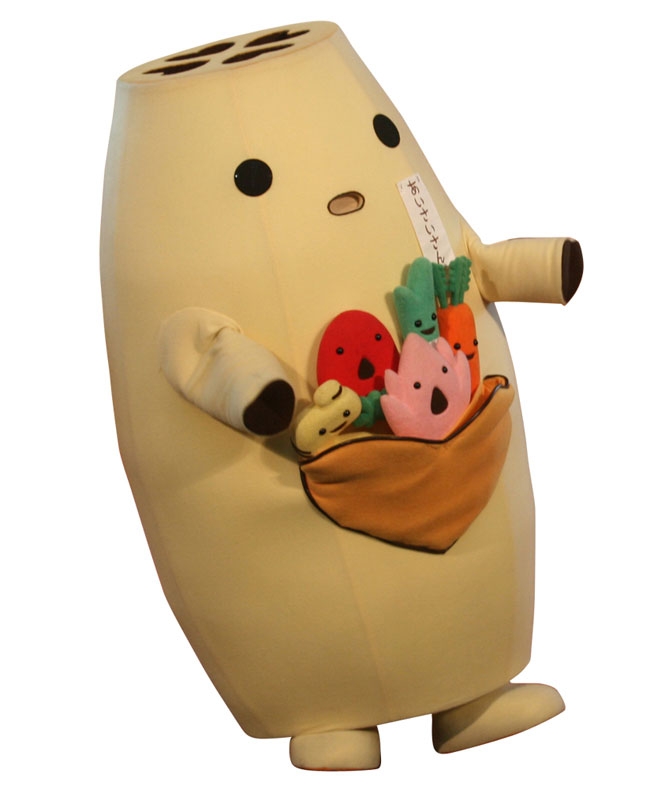The Japanese housewares brand aeru is always looking for ways to make the lives of young families easier. Its latest product, a collaboration with the designers at Nosinger, is a line of handmade bowls that help young children learn how to eat on their own with fewer messy spills. The design is simple: starting with traditional Japanese flatware materials, a small ledge is built as a center ring in the bowl in order to help the eater-in-training push food back onto a utensil before taking a bite. According to Spoon-Tamago, the bowls come in three varieties: Yamanaka Lacquer, Ootani-yaki pottery, and Tobe-yaki porcelain, and depending on the materials, a set of three costs between $45 and $100.
Early last year, Unbranded Designs co-founder Sameer Dohadwala thought it would be easy to build his own custom desk. After a process he jokes was a miserable failure—all that was left were Home Depot receipts and a “pile of wood and broken dreams”—he sought out independent designers to help finish the job. That's when he had an epiphany. With co-founders Samer Saab and Max Greenblatt, he could create a better way to bring well-designed furniture to the masses.
That spark led to Unbranded Designs, a new online design community and furniture manufacturing concern in Chicago. Dohadwala met with independent designers and found that most had amazing prototypes and renderings in their studios, unrealized and unseen by the masses. “Their work was much more interesting than the mass-designed pieces we had been looking at,” said Dohadwala. “I wanted all of them in my apartment.”

These designs didn’t reach fruition, the Unbranded team learned, because designers lacked a combination of seed money, manufacturing know-how, and marketing and sales savvy to begin production. This inspired the trio’s concept, a kind of Threadless for furniture, which aims to provide technical and logistical support and a ready network of local and regional artisans and manufacturers. Users submit designs, such as Philip Royster’s R2 table (pictured above) which boasts a unique curved pattern built with fishing wire. Comments and feedback are exchanged and the more popular, unique pieces get built in small custom runs and sold by Unbranded. The catalog boasts over a dozen pieces, constantly cycled in and out; currently, the site’s offering the angled ISA chair by School of the Art Institute grad student Adele Cuartelon, built by DKE Design.
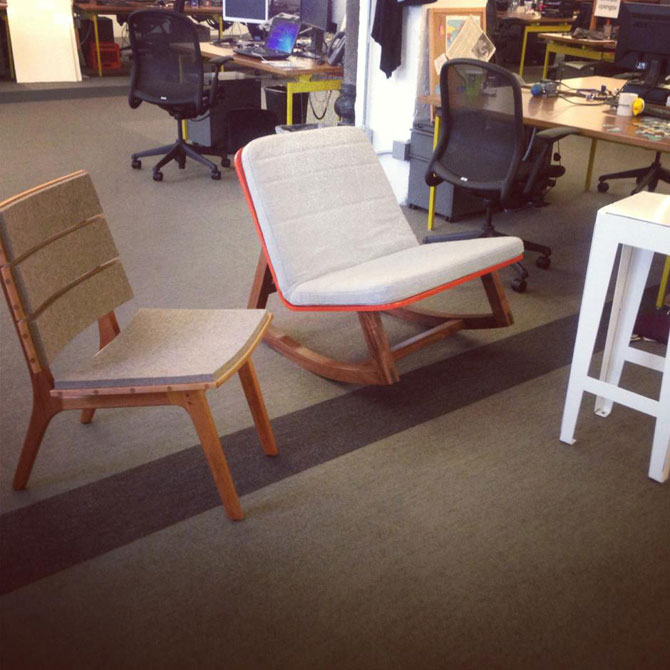
Business interest has been growing—Unbranded won the Chicago Lean Startup Challenge last fall and is finishing a new round of seed funding—and the startup now runs out of 1871, a tech space inside Chicago’s Merchandise Mart, itself an iconic building and a center of furniture and design. It’s a fitting home for a new type of manufacturing and design. “I think it’s as practical as it is symbolic,” says Dohadwala. “We’re at a place where we’re trying to disrupt the industry with technology.”
Have a design in mind? Bring it to unbrandeddesigns.com
It seems as if everyone we know has been jetting to warmer zones this month. If the option was available, we'd put Mojave Sands Motel on our winter roadtrip itinerary.
The five-room desert motel in Joshua Tree, CA is an alternative on the Gram Parsons fan's pilgrim trail to the Joshua Tree Inn & Motel, but more importantly, it's been updated in a really unique way. The bones of the space, an abandoned 1950s motel, were kept, but owner Blake Simpson (former furniture designer for Marc Jacobs) spent nine years renovating the place. The doors, windows, gates, and furniture were designed and built on site giving it a real personalized feel. The walls feature cedar plank, the concrete floors were refinished, and the new beds are made of black walnut. All five rooms are completed with a mix of vintage, mid-century furniture. Each room has unusual amenities such as a typewriter, record player with vinyl, and various objet d'art that encourage us creatives to find inspiration.
The hotel is already a hit with L.A. creative industry types looking for a getaway. Nearby, a music and film production studio beckons and Simpson says solar power and a diner are in the works for his compound.
This oasis isn't suited for the pampered. It's dusty, windy, laidback, and on the main road, evidently, but offers plenty of space for hanging out and making your own good times. That's what it's all about, anyhow.
Rooms begin at $200/night at mojavesands.com.
This Sunday, Brooklyn's Beginnings (110 Meserole Ave) hosts a book release for Warp and Weft: Poster Construction by Sonnenzimmer as well as a pop-up shop.
Curious about the new book on poster construction, we asked Chicago designer Zach Dodson (who co-edited the book with featherproof books cohort Jonathan Messinger) what he learned working on the project with "Wabi-Sabi design masters" Sonnenzimmer, AKA Chicago-based studio of Nick Butcher and Nadine Nakanishi. Here's what he told us.
1. How to approach things (and people) thoughtfully. Wabi-Sabi principles: Simplicity and Modesty
Anyone can stumble onto a good design. But how to achieve amazing results consistently? The answer: Process. Long, thoughtful, intentional process. And when it comes to process, the Chicago art and design studio Sonnenzimmer have got it down pat.
When they tapped Jonathan Messinger and I at the small press we run, featherproof books, to lend a hand editing their first ever full length book, we jumped at the chance to take a peak inside their process, and be part of the fun. Also, they were so kind and humble and funny in their approach, how could we say no? They acted thankful that we were working with them every step of the way, though we should have really been then thankful ones. This is a great approach to collaboration.
And the results are amazing. Sonnenzimmer has got a style all its own.
2. How to pay attention to the hiccups, go with the flow, and be patient. Wabi-Sabi principles: Imperfection and Acceptance
What's the Sonnenzimmer process like? In the limb-bound, foil-stamped Warp and Weft, they get down and dirty with some of their best posters, analyzing each in terms of pop culture, art history, and formal composition. If anyone knows how to take advantage of the ‘happy accident’ it’s Sonnenzimmer. The compositional reads are broken out into schematics to show you how each poster is meant to be read, graphically. He's responsible for the stunning look and feel of the entire book. There were hiccups editing and due to some crazy life circumstances I fell off the grid for a few weeks while Jonathan picked up the slack. The road was bumpy at times but without the struggle the book would be completely different.
The book (designed by by Alex Fuller of the hippie cult Post Family) provides a fascinating peak inside Sonnenzimmer's thoughtful poster-making process. They brought the same level of care and attention to the process of creating a book. Typically, we met at their space, they asked questions and debated (sometimes with us, sometimes with each other) every aspect of the book, and how it could get across what it was like to work inside their small art and design studio. We were on a schedule, and passed many rounds of revisions back and forth, pruning, editing, expanding, smoothing the edges, and tightening down the hatches until the book as a whole was a perfectly balanced, well-executed piece of art.
Just like their posters! Some of which subscribe to the Japanese principles of Wabi-Sabi.
3. Just what the hell Wabi-Sabi is.
A mystical, nostalgic Japanese philosophy of beauty, focused around the imperfections created by nature, aging, and accident. It’s the scar on the otherwise perfect face, the stains on a teapot from years of use, and the faded, cracking autumn leaves. You wanna see that philosophy exercised in the wild world of rock posters? Then you should buy and study your own copy of Warp and Weft.
Warp and Weft: Poster Construction by Sonnenzimmer
Book Release and Pop-up Shop
Sunday, Feb 24, 11–4pm
Beginnings
110 Meserole Ave
Brooklyn, NY 11222
It's stunning how well the '80s underground has aged—and we're not just talking about the music. Take D.C. for instance. This weekend, the Corcoran Gallery in Washington, D.C. hosts "Pump Me Up, DC Subculture of the 1980s" which explores the capitol's thriving underground of that decade via surviving visual ephemera of the era. Go-go posters by Globe, photos of "Cool Disco Dan" graffiti, and handmade punk and hardcore flyers as album and single sleeve designs from the era will surely figure in. There's also a "Throwback Jam" concert at the 9:30 Club this weekend featuring Trouble Funk, Scream, Henry Rollins, Youth Brigade, Black Markey Baby, and more. To say we're jealous we can't make it (and a bit nostalgic) would be an understatement.
"Pump Me Up" runs Feb 23–April 7, 2013 at the Corcoran Gallery of Art, Washington, D.C.
Get more info at the Corcoran Gallery. The "Pump Me Up" exhibition catalog is $45.
If you're not lucky enough to live in the shadow of a snow-capped mountain range in Switzerland or the American West, a new line of knives was designed just for you. The Panorama Knife company wanted to put mountain ranges in reach of those of us challenged by geography or free time to travel. Their solution was to design a serrated bread knife using the outline of famous European mountain ranges, complete with the names and elevations of every mountain they include.
The knives can be ordered with a handle made from recycled Indian rosewood, leftover from furniture manufacturing, or simple plastic. But if you're not convinced European mountain ranges make the best knife blades, look no further than this demo video to see how well these work on a few different, but equally delicious looking, breads.
Norwegian design studio Skrekkøgle obviously has fun with their work. Everything they do has an element of whimsy and cheekiness to it, which somehow never seems to take anything away from the functionality of the concept. The Plugg radio is no exception; the sunny little cube is simply operated by removing the cork from the top. Much like the satisfaction in uncorking a bottle of wine, as soon as you uncork the Plugg, the sounds start spilling out. The kind of tactile relationship this creates with something we tend to take for granted is a welcome idea. Unfortunately, it's still just a prototype. Any angel investors reading this?
New York City-based Ana Kras uses leftover cotton threads to build unpretentious yet complex lampshades that are as beautiful as they are practical. The Serbian designer makes each lantern by hand, focusing on unique shapes and abstract patterns. With her first collection in the works, we spoke with the multi-talented artist about her gorgeously earthy, one-of-a-kind shades.
You describe your Bonbon lamps as a family of lanterns. When and how was the original Bonbon lamp first conceived?
The first Bonbon was made in my apartment in Belgrade in fall of 2009. I was working on another lamp and had an extra lampshade frame sitting on my kitchen floor for weeks. I think that object was in the corner of my eye for too long, so I subconsciously thought of how to make something out of it. I got the idea of wrapping cotton threads around in a certain way and tried it and that's how the first Bonbon lamp was made.
How long does it take to construct each lamp?
First, I have frames built by a metal manufacturer and then powder-coated or plated and then it's time for my handwork. It takes about twenty hours of patient work to make the smallest one, and much more for bigger ones.
From where do you source your cotton thread?
So far, I have been using the leftovers from a Serbian knitwear company called Ivko Knits. They were so kind to support me at the very beginning. In fashion industry, things change very fast; each season brings new color palettes and the old threads are stored or thrown away. It's a nice gesture to recycle things. If, by any chance, someone who works with knitwear reads this and wants to collaborate, please let me know!
How has the Bonbon evolved since its initial creation?
Each new Bonbon is different from the previous one. I am always trying new shapes and new patterns. Lately, I have been into abstract patterns. I am also developing many new shapes and some more complex pieces consisting of multiple parts. So far, I have been making Bonbon’s usually per request, but I’m working on making a first collection, with small editions of each lamp.
* Prices are based on size and start at $1300.
The Bonbon lamp is available at anakras.com
This Japanese website ranks 880 mascots, many of which represent Japan's 47 prefectures as well as towns, festivals, and events. We wish we knew more. Why, for example, is number one a rather innocuous duck with a ship in his belt?
A "tribute to a friend" is how designer Johan Andersson affectionately refers to his latest project, a documentary film featuring the work and life of Swedish design icon Olle Eksell. Andersson was 22 years old when he moved to Stockholm to study advertising at the Berghs School of Communication. Young, fearless, and clearly impressionable, Andersson looked up his "great hero" Olle Eksell and phoned the acclaimed designer the same day. To his surprise, Eksell graciously invited him over for coffee and the two exchanged thoughts on advertising, design, and life—an exchange that, until Eksell’s death in 2007, would become a routine occurrence.
In collaboration with the Eksell family, Andersson built a website in Olle’s honor, featuring photos, illustrations, and movies, as well as an online shop, where he sells a collection of products that he designed and produced in Eksell’s name. But it’s his documentary film work (see the trailer, above) that Andersson hopes will generate an international buzz around the designer’s extraordinary life and work. The film, currently in its fundraising phase, plans to highlight Eksell’s contributions to Swedish design, while examining his compelling life with wife Ruthel Eksell. “The focus is to continue to spread the mission of Olle Eksell and his beliefs,” explains Andersson. “For me, meeting with Olle was a life-changing experience and I want people to share his ideas about good design and economy.”
To learn more about the film, or back this project, please visit Andersson’s Olle Eksell fundraising page.

